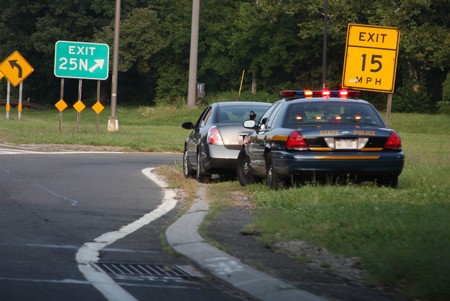23 Reading: Experiments
You’ve probably tested personal social theories. “If I study at night and review in the morning, I’ll improve my retention skills.” Or, “If I stop drinking soda, I’ll feel better.” Cause and effect. If this, then that. When you test the theory, your results either prove or disprove your hypothesis. One way researchers test social theories is by conducting an experiment, meaning they investigate relationships to test a hypothesis—a scientific approach. There are two main types of experiments: lab-based experiments and natural or field experiments.
In a lab setting, the research can be controlled so that perhaps more data can be recorded in a certain amount of time. In a natural or field-based experiment, the generation of data cannot be controlled but the information might be considered more accurate since it was collected without interference or intervention by the researcher. As a research method, either type of sociological experiment is useful for testing if-then statements: if a particular thing happens, then another particular thing will result.
To set up a lab-based experiment, sociologists create artificial situations that allow them to manipulate variables. Classically, the sociologist selects a set of people with similar characteristics, such as age, class, race, or education. Those people are divided into two groups. One is the experimental group and the other is the control group. The experimental group is exposed to the independent variable(s) and the control group is not. This is similar to pharmaceutical drug trials in which the experimental group is given the test drug and the control group is given a placebo or sugar pill. To test the benefits of tutoring, for example, the sociologist might expose the experimental group of students to tutoring while the control group does not receive tutoring. Then both groups would be tested for differences in performance to see if tutoring had an effect on the experimental group of students. As you can imagine, in a case like this, the researcher would not want to jeopardize the accomplishments of either group of students, so the setting would be somewhat artificial. The test would not be for a grade reflected on their permanent record, for example.
The Stanford Prison Experiment is perhaps one of the most famous sociological experiments ever conducted. In 1971, 24 healthy, middle-class male university students were selected to take part in a simulated jail environment to examine the effects of social setting and social roles on individual psychology and behaviour. They were randomly divided into 12 guards and 12 prisoners. The prisoner subjects were arrested at home and transported blindfolded to the simulated prison in the basement of the psychology building on the campus of Stanford University. Within a day of arriving the prisoners and the guards began to display signs of trauma and sadism respectively. After some prisoners revolted by blockading themselves in their cells, the guards resorted to using increasingly humiliating and degrading tactics to control the prisoners through psychological manipulation. The experiment had to be abandoned after only six days because the abuse had grown out of hand (Haney, Banks, and Zimbardo 1973). While the insights into the social dynamics of authoritarianism it generated were fascinating, the Stanford Prison Experiment also serves as an example of the ethical issues that emerge when experimenting on human subjects.
An Experiment in Action

A real-life example will help illustrate the experiment process. In 1971, Frances Heussenstamm, a sociology professor at California State University at Los Angeles, had a theory about police prejudice. To test her theory she conducted an experiment. She chose fifteen students from three ethnic backgrounds: black, white, and Hispanic. She chose students who routinely drove to and from campus along Los Angeles freeway routes, and who’d had perfect driving records for longer than a year. Those were her independent variables—students, good driving records, same commute route.
Next, she placed a Black Panther bumper sticker on each car. That sticker, a representation of a social value, was the independent variable. In the 1970s, the Black Panthers were a revolutionary group actively fighting racism. Heussenstamm asked the students to follow their normal driving patterns. She wanted to see whether seeming support of the Black Panthers would change how these good drivers were treated by the police patrolling the highways.
The first arrest, for an incorrect lane change, was made two hours after the experiment began. One participant was pulled over three times in three days. He quit the study. After seventeen days, the fifteen drivers had collected a total of thirty-three traffic citations. The experiment was halted. The funding to pay traffic fines had run out, and so had the enthusiasm of the participants (Heussenstamm 1971).
Think It Over
Create a brief research design about a topic in which you are passionately interested. Now write a letter to a philanthropic or grant organization requesting funding for your study. How can you describe the project in a convincing yet realistic and objective way? Explain how the results of your study will be a relevant contribution to the body of sociological work already in existence.
experiment: the testing of a hypothesis under controlled conditionsShow Glossary

